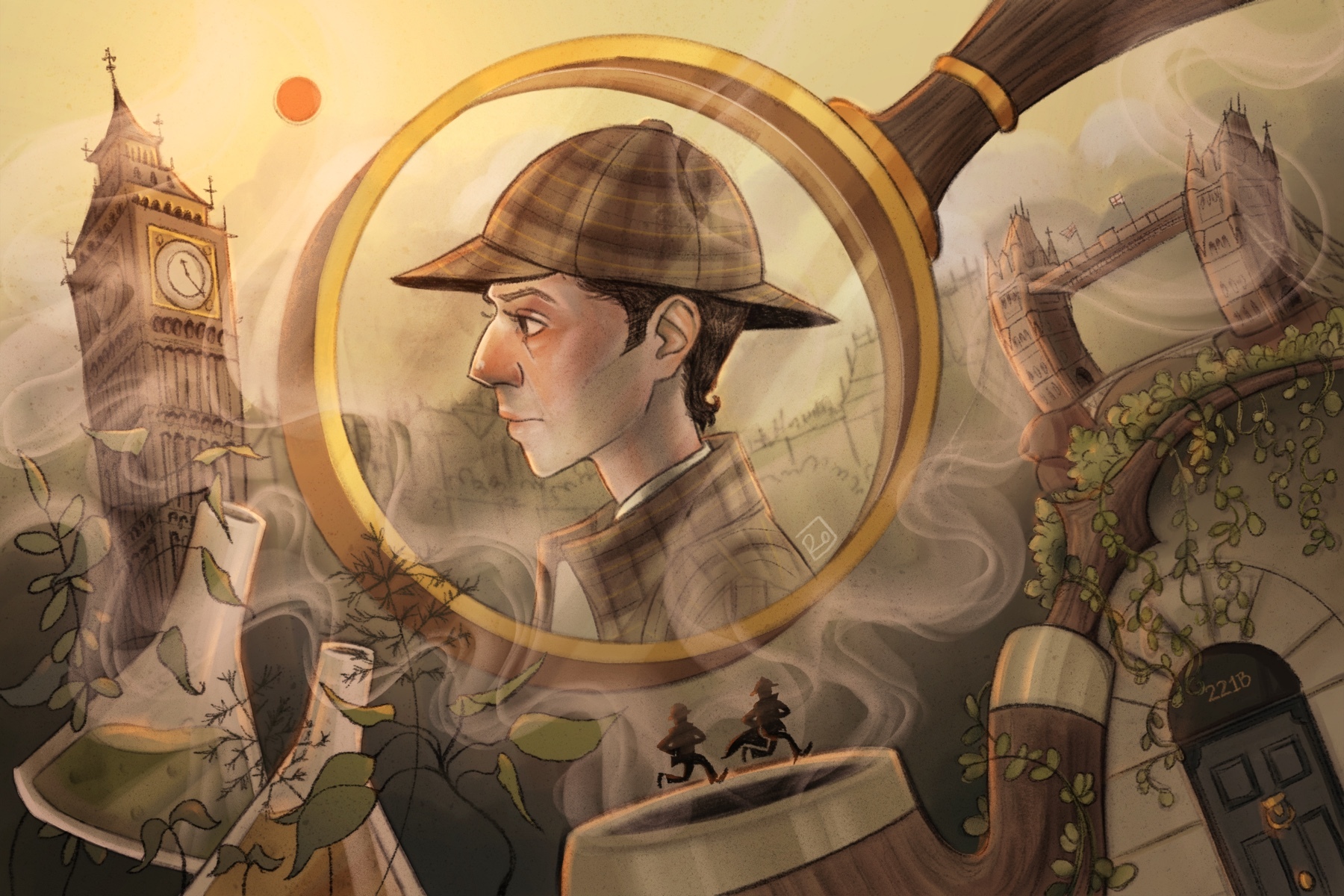Few characters are as ingrained in the public consciousness as Sir Arthur Conan Doyle’s most well-known creation, Sherlock Holmes. Almost everyone is familiar with some aspect of the character, from his iconic deerstalker hat to his nearly unparalleled abilities of observation and deduction. While Holmes was not the first literary detective character, he is by far the most recognized, codifying so many elements of the mystery genre that he in essence became the new blueprint for all stories to come.
This influence has led to his becoming the second most portrayed human character onscreen, trumped only by Dracula. Sherlock Holmes has appeared in more than 260 different films and television shows and hundreds of radio adaptations, being played by more than 80 different actors. So, what led to Holmes’ staggering popularity and enduring cultural legacy? The answer is more clear-cut than one might expect: a growing reading population, the advent of radio and television and, of course, his uniquely charming characterization.
Four novels and 56 short stories make up the canon of Sherlock Holmes, recounting the adventures of the eponymous “consulting detective” and his faithful companion and chronicler Dr. John Watson, a retired British army surgeon. Over the course of their adventures, the duo goes up against many iconic villains, including Holmes’ recurring adversary Professor James Moriarty, an astronomer-turned-criminal-mastermind.
The stories represented a turning point for the mystery genre; when “A Study in Scarlet,” Holmes’ first outing, was published serially in the Strand magazine in 1887, mystery wasn’t seen as a “distinguished” literary genre.
However, Doyle’s stories proved so popular among multiple social classes that the genre exploded, leading to dozens of imitators and people trying to write similar stories. Ironically, Doyle himself famously hated the character, going so far as to kill him off in the story “The Final Problem,” a tactic so unpopular with the general public that he received hundreds of angry fan letters and even disapproval from his own mother. The overwhelming response led to Doyle’s resurrecting the character in “The Empty House.” He proceeded to write 32 more short stories and two novels afterward. Yet while Sir Conan Doyle himself was not fond of his most famous creation, his descendants certainly are.
As of 2021, all but 10 Holmes stories reside in the public domain in the United States, so the contents of those tales are free to be adapted into any sort of media without the consent of the Conan Doyle estate. This may seem insignificant, but the 10 stories in question contain many crucial character details about Holmes and Watson, including their relationship’s growth into a genuine friendship. The estate is notoriously litigious when it comes to using any content from those stories, which still collect royalties from many pieces of Holmes-related media. As luck would have it, the 10 remaining stories are set to enter the public domain by 2023.
But why was Holmes so famous then, and how has that popularity remained steady for 150 years? While the multitude of adaptations lead to periodic resurgences in the character’s acclaim, it’s clear that it’s the man himself who draws people in. His characterization in Doyle’s stories is a fascinating one, of a man whose brilliance is almost outshone by his many eccentricities. His seemingly superhuman powers of deduction and observation are what he is most known for, but they’re only the start of his allure.
Some notable character tidbits include Sherlock’s method of purposefully forgetting information he deems “useless” (like the Earth going around the sun), his terrible aversion to boredom to the point where he uses substances like morphine and cocaine to distract himself when he’s not on a case and his apparent lack of emotions. Many adaptations are particularly keen on that last point, portraying Holmes as completely oblivious to social cues and either unwilling or unable to change that.
While many adaptations depict him as reserved to the point of his appearing cold, Holmes clearly cares for many people in his life to some degree, including his landlady Mrs. Hudson, his elder brother Mycroft (whose powers of deduction outshine even Sherlock’s) and especially his constant companion Dr. Watson.
While it may seem reductive to portray Holmes as emotionally stunted, it’s likely that the reason he is painted as such in many adaptations is because of the copyright status of the final 10 stories in which Holmes exhibits significant character development.
Evidence for this includes a recent lawsuit by the Conan Doyle estate alleging copyright infringement by Netflix in their original film “Enola Holmes,” featuring Henry Cavill as Sherlock. The estate claimed that by having Cavill’s Holmes exhibit emotion, Netflix breached the copyright of some of the 10 stories. The case was settled for an undisclosed sum, and the film’s production and release continued as planned.
As time passes, Holmes has undergone the Flanderization — an oversimplification of a character that reduces them to a single aspect of their character that gradually occurs after years of serialization — one would expect from a character that’s been around since the 1880s. This is particularly evident in BBC’s “Sherlock” series, which aired for four seasons from 2010-2017. In “Sherlock,” Holmes is a self-described “high-functioning sociopath” who is held in little regard by those around him until a certain point in the series, a stark contrast with the renowned gentleman detective of Sir Conan Doyle’s stories.
Hundreds of Holmes pastiches — works that emulate Doyle’s writing style but tell original Holmes stories — have also been made in which Holmes is crossed with many other fictional characters, including Dracula, Batman and even the crew of the USS Enterprise. Holmes also appears in an ongoing series of video games published by Ukrainian-based studio Frogwares, including the forthcoming Sherlock Holmes: Chapter One, which is due to be released later this year and will feature a young Sherlock on an all-new adventure on a fictional Mediterranean island. Further film and television adaptations are also in the works.
Sherlock Holmes will likely remain in the public consciousness for as long as the mystery genre exists, and possibly beyond that. The freeing of the final 10 stories from copyright will no doubt result in a surge of new pastiches and adventures for the character and will hopefully once again result in a surge of popularity. For Sherlock Holmes, the game is always afoot.

















